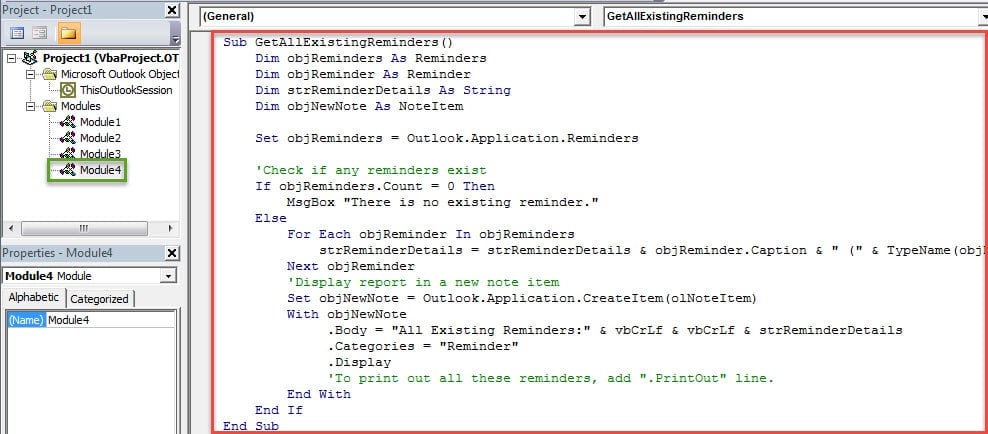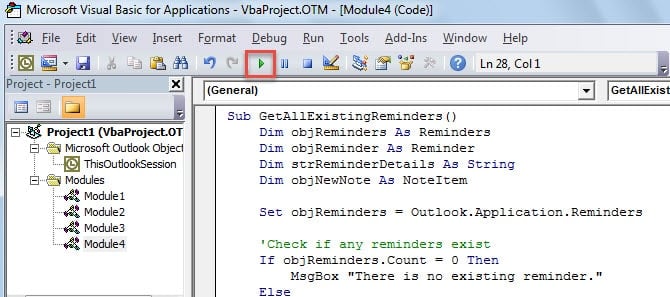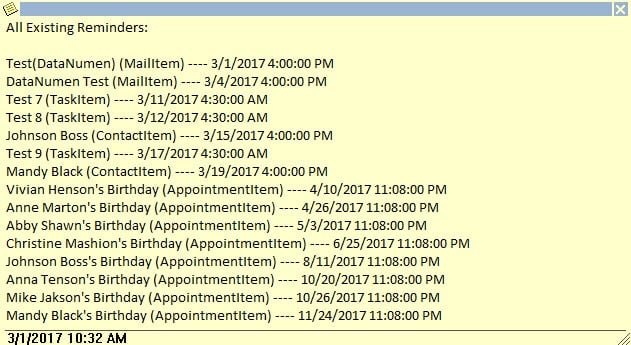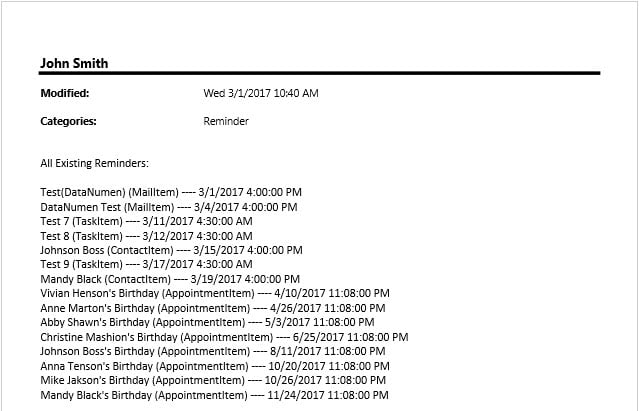If you would like to quickly check or print a list of all the current existing reminders in your Outlook, no matter task reminder or appointment reminder, you can use Outlook VBA. This article will introduce you how to get it elaborately.
In general, it is pretty simple to view all the existing reminders in a specific folder, such as all the reminders in a specific task folder or a certain calendar. However, when you wish to check all the reminders in all Outlook folders simultaneously, if you simply recur to Outlook native features, it is impossible. Therefore, you have to search other approaches, such as 3rd party add-ins or VBA codes. Here we will guide you how to quickly all the current reminders with Outlook VBA.
Quickly Get a List of All the Existing Reminders
- In the first place, start Outlook application.
- Then you should switch to the “Developer” tab. If you have not found it, then you need to first enable it. Go to “File” > “Options” > “Customize Ribbon”.
- Subsequently, you ought to click on the “Visual Basic” button under this tab.
- After that, you will get access to the Outlook VBA editor. At this time, you can open a module that is not in use or insert a new module by selecting “Insert” > “Module”.
- Next you should copy and paste the following VBA codes into the module.
Sub GetAllExistingReminders()
Dim objReminders As Reminders
Dim objReminder As Reminder
Dim strReminderDetails As String
Dim objNewNote As NoteItem
Set objReminders = Outlook.Application.Reminders
'Check if any reminders exist
If objReminders.Count = 0 Then
MsgBox "There is no existing reminder."
Else
For Each objReminder In objReminders
strReminderDetails = strReminderDetails & objReminder.Caption & " (" & TypeName(objReminder.Item) & ") ---- " & objReminder.NextReminderDate & vbCrLf
Next objReminder
'Display report in a new note item
Set objNewNote = Outlook.Application.CreateItem(olNoteItem)
With objNewNote
.Body = "All Existing Reminders:" & vbCrLf & vbCrLf & strReminderDetails
.Categories = "Reminder"
.Display
'To print out all these reminders, add ".PrintOut" line.
End With
End If
End Sub
- Later you can click on the “Run” icon in the toolbar to start the new macro.
- Eventually, a new Outlook Note item will show up. All the existing reminders in your Outlook will be included in this Note, like the following screenshot:
Note: If you’ve added the “.PrintOut” line in the VBA codes, then Outlook will print the note item automatically. It will look like the image below:
Be Careful of Malicious Macros
Macro is indeed helpful and useful as it can help us to accomplish the tasks that seem impossible. However, you should keep cautious of the macros from others, in that they may be malicious. It means that the macros from others may contain viruses, which can render PST corruption in a flash. Assuming that your PST file gets infected, Scanpst.exe, the free inbox tool, won’t make any effects. At that time, you have no choice but to use a more powerful tool, such as DataNumen Outlook Repair.
Author Introduction:
Shirley Zhang is a data recovery expert in DataNumen, Inc., which is the world leader in data recovery technologies, including sql fix and outlook repair software products. For more information visit www.datanumen.com



